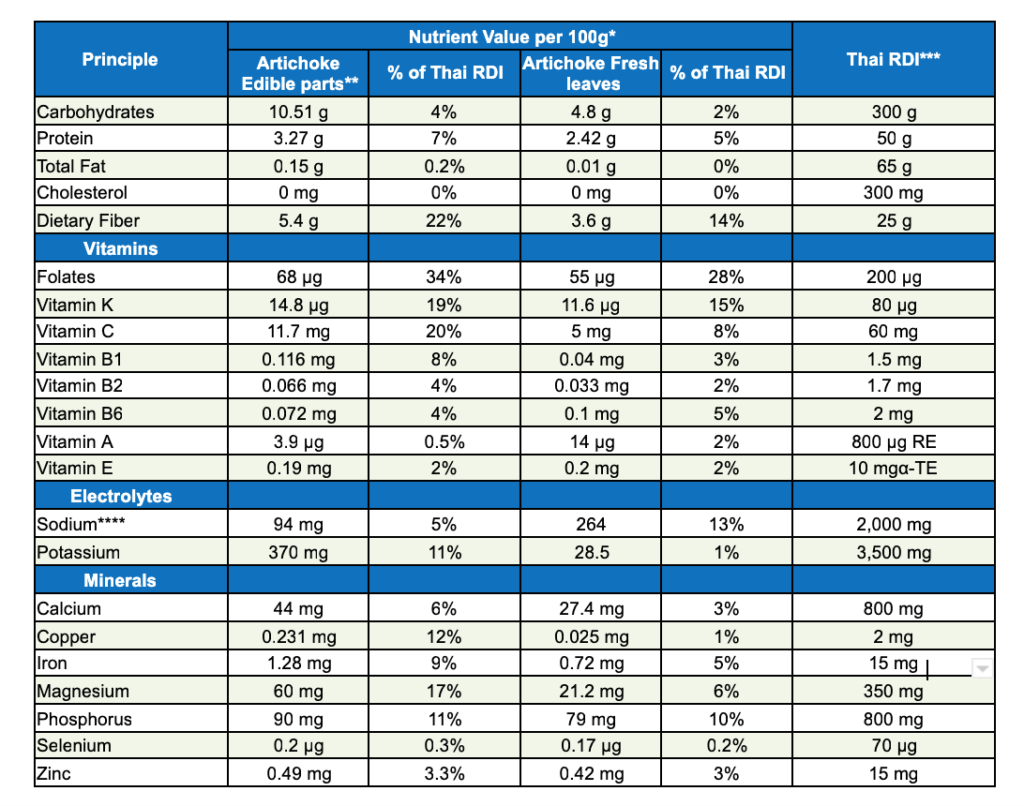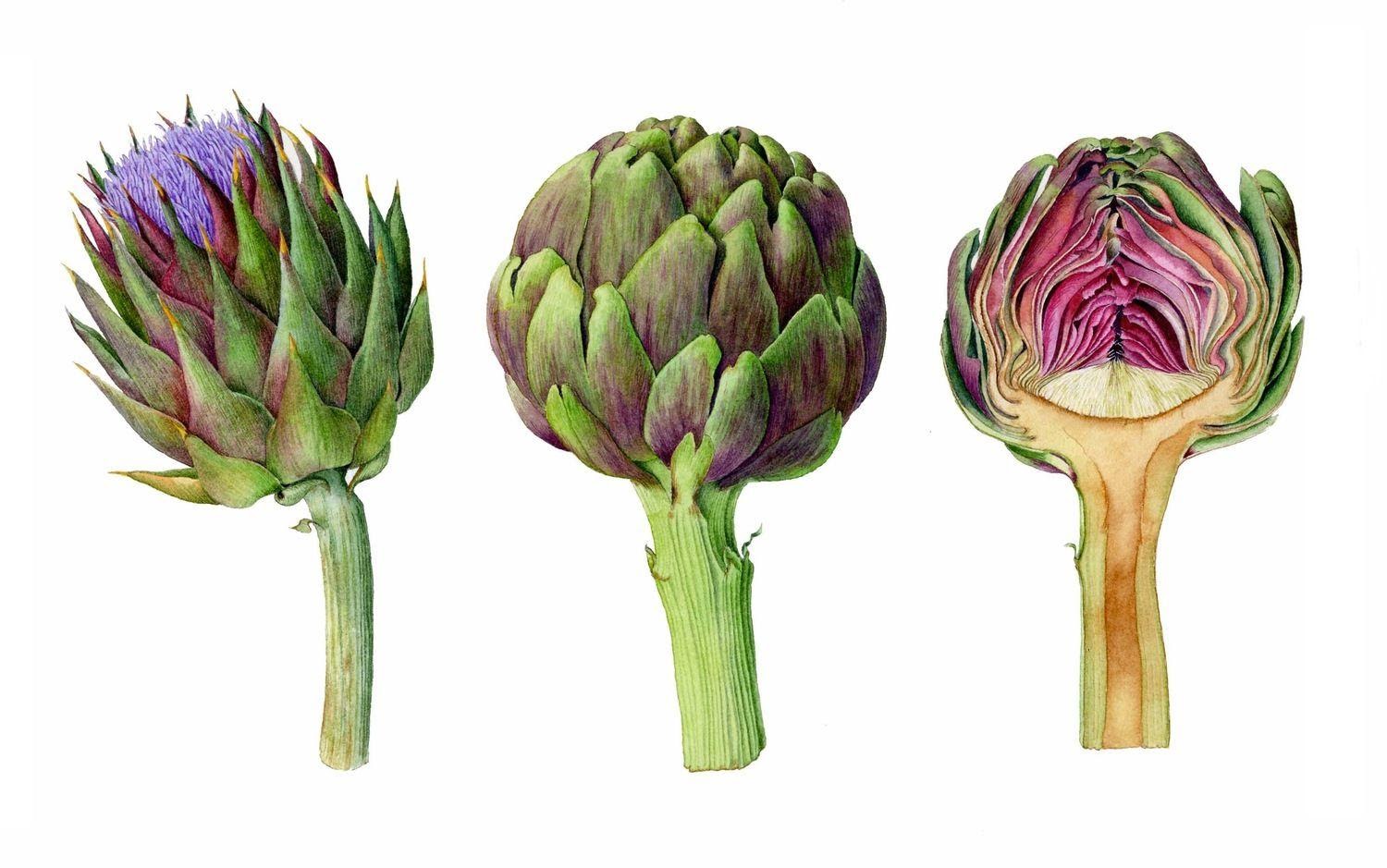Artichoke, or Cynara scolymus L, is is a perennial plant widely cultivated in the Mediterranean area, chiefly in Spain, Italy and France. Also, in Southern of United States, South America, China, Egypt, Morocco and Vietnam, in Dalat highlands where it is grown mainly for making tea and as vegetables.
Artichoke’s Use in History of Medicine2
- As early as the 4th century B.C., artichoke was used as a food and a medical remedy. A pupil of Aristotle named Theophrastus was one of the first to describe the plant in detail.
- During the Roman Empire, the aristocracy enjoyed it as a delicacy, an appetizer and digestive aid.
- In 16th century, artichoke’s use for liver problems and jaundice was recorded.
- In 1850, a French physician successfully used artichoke leaves extract to treat a boy who had been sick with jaundice for a month that could not be improved from the drugs used at that time. This inspired researchers to study more about artichoke extract and resulted in the knowledge of active ingredients and its mechanism of action.
- Traditional European medicine used artichoke leaves as a diuretic to stimulate the kidneys and use as a choleretic to stimulate the flow of the bile from liver and gallbladder. Bile is a yellowish-brown fluid produced by the liver and stored in the gallbladder. It help emulsify the lipids in food and play a significant role in digestive function.
- In the first half of 20th century, French scientists researched the use of artichoke as a medicine and their works suggested that it had an effect of stimulating the kidney and gallbladder.
- In mid-20th century, Italian scientists isolated “cynarin” from artichoke leaf. Later, synthetic cynarin was used as a drug to stimulate the liver and gallbladder and to treat elevated cholesterol during 1950s to 1980s.
Artichoke, a Functional Food3
According to the European Commission on Functional Food Science, artichoke is a plant whose natural components, beyond their basic nutrition value, have positive effects on target functions and reducing the risk of specific diseases.
In Mediterranean area, artichoke is mainly cultivated for its large immature flower heads. The edible parts from flower head are tender inner bracts and the receptacle. Compared to other vegetables, artichoke flower heads contain high levels of total polyphenols with hepatoprotective, anti-hypocholesterolemia, and antioxidant properties.
Artichoke flower heads and leaves represent a rich source of vitamins and minerals, in particular Folates, Vitamin C, Copper, Iron, Magnesium, Manganese, and Phosphorus.
Nutritional value of raw artichoke per 100g4, 5

**The edible parts of artichoke are receptacle and bracts.
*** Thai Recommended Daily Intakes – Thai RDI 1998 ages of 6 years and above based on the energy demand of 2,000 kilocalories/day.
****Notification of Ministry of Public Health 2018, Thai RDI of Sodium is 2,000 mg.
Artichoke Leaves and Benefits6, 7
Artichoke leaves have been used for herbal medicine for a long time. They contain very high level of polyphenols. Artichoke leaf extracts are currently commercialized as drugs mainly for the treatment of liver diseases. Their pharmacological properties are well documented in several studies.
In various pharmacological studies, artichoke leaf extracts have shown a wide range of effects, including choleretic, anti-hypocholesterolemia and antioxidant activities. Moreover, artichoke leaf extracts are believed to be effective in the treatment of dyspeptic syndromes and gastric diseases.
Artichoke leaves used in the commercial herbal medicine consists of tea (infusion) and a water/alcoholic extract. It is very common to drink the teas made with artichoke leaves for liver and digestive disorders.
Reference:
1T.K. Lim, Edible Medicinal and Non-Medicinal Plants: Volume 7, Flowers, p.291-328. DOI 10.1007 /978-94-007-7395-0_20, © Springer Science+Business Media Dordrecht 2014
2Behara, YR et al, Pharmacological studies on artichoke leaf extract -An edible herb of Mediterranean Origin, JPBMS, 2011, 11(11).
3Ceccarelli, N. et al, Globe artichoke as a functional food, Mediterr J Nutr Metab (2010) 3:197–201.
4USDA National Nutrient database
5A., EI Sayed et al., Artichoke edible parts are hepatoprotective as commercial leaf preparation, Revista Brasileira de Farmacognosia 28 (2018) 165–178.
6Ceccarelli, N. et al, Globe artichoke as a functional food, Mediterr J Nutr Metab (2010) 3:197–201.
7Piston, M. Infusion, decoction and hydroalcoholic extracts of leaves from artichokes (Cynara cardunculus L. subsp. Cardunculus) are effective scavengers of physiologically relevant ROS and RNS, Food Research International, 64: (204) 150-156.
